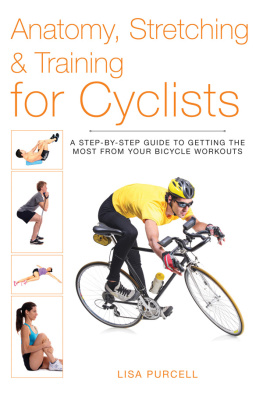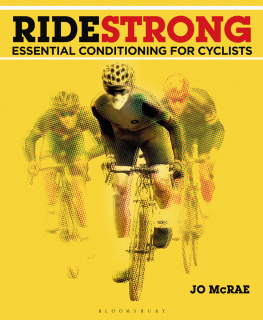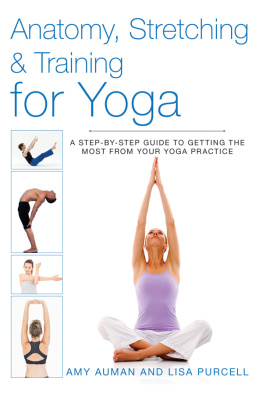Copyright 2014 by Moseley Road Inc Produced for Skyhorse Publishing by Moseley Road, Inc. (www.moseleyroad.com) All Rights Reserved. No part of this book may be reproduced in any manner without the express written consent of the publisher, except in the case of brief excerpts in critical reviews or articles. All inquiries should be addressed to Skyhorse Publishing, 307 West 36th Street, 11th Floor, New York, NY 10018. Skyhorse Publishing books may be purchased in bulk at special discounts for sales promotion, corporate gifts, fund-raising, or educational purposes. Special editions can also be created to specifications.
For details, contact the Special Sales Department, Skyhorse Publishing, 307 West 36th Street, 11th Floor, New York, NY 10018 or. Skyhorse and Skyhorse Publishing are registered trademarks of Skyhorse Publishing, Inc. , a Delaware corporation. www.skyhorsepublishing.com 10 9 8 7 6 5 4 3 2 1 Library of Congress Cataloging-in-Publication Data is available on file. ISBN: 978-1-62873-634-2
eISBN: 978-1-62873-993-0 Printed in China CONTENTS Strengthening Your Arms & Legs Rolling Like a Ball  INTRODUCTION: FIT FOR CYCLING A s a cyclist, you already know how wonderful a bike ride can make your body feel. During a good ride, your legs are pumping, your abdominal muscles are engaged, and a wide spectrum of different muscle groups are working hard as you power forward.
INTRODUCTION: FIT FOR CYCLING A s a cyclist, you already know how wonderful a bike ride can make your body feel. During a good ride, your legs are pumping, your abdominal muscles are engaged, and a wide spectrum of different muscle groups are working hard as you power forward.
But you can feel even better. When it comes to optimizing performance, avoiding aches and pains, and generally enhancing how you feel while cycling, there is always room for improvement. This book will give you all the tools you need to condition your body to make every ride your best one. Whether you are a beginner or a seasoned athlete, you can benefit from stretches that limber up tight muscles, strengthening moves that target your core and lower body, and exercises that improve your posture and hone the sense of balance that is so vital to cycling effectively. The exercises in these pages are designed to work a wide range of muscles that come into play when cycling. They can be performed in your living room, so that in between forays into the streets or along the mountain trails, you will be working your entire body to meet the unique demands of your sport.
CYCLING BASICS C YCLING IS AN INCREDIBLY REWARDING activity. With its low impact on the joints and high rate of calorie burn, it is a great choice for anyone wanting to get (and stay) in shape. It is also accessible to enthusiasts of all fitness levels: no matter what your capability when beginning or returning to the sport, cycling allows for all forms of progression, from riding a flat mile in the local park loop to completing your first hilly 100-mile endurance ride. One sport, many benefits The sport of cycling carries fantastic health benefits. It has been known to boost mental health, decrease the risk of coronary heart disease, and improve coordination skills. Studies have connected cycling to not only the physical effects of decreased waistlines and prolonged caloric burn, but also to heightened emotional health, mental capacity, and even earning potential and productivity at work.
Getting back on your bike If youre reading this book, you likely already have some level of interest in cycling. Perhaps youve seen the enviable chiseled quadriceps and calves of professional cyclists riding the Tour de France or maybe youre looking for a low-impact transition from running. Maybe you want to try racing and are looking to increase speed and power output. If youre a triathlete, you may be seeking to transfer your current skills and capabilities to the cycling portion of your racing. Some of you may want to embark on a fitness regimen that also benefits the environment, choosing to bike to work rather than drive a car. Or, you may simply love riding a bike and want to get better at it.
Whatever the nature of your interest in cycling, this book will help you to get fit and stay fit for the physical demands of the sport. This is accomplished through targeting the muscles predominantly used to bring about forward motion of the bike, as well as through building the powerhouse muscles that will ultimately lead to a toned and balanced cycling body. After all, cycling is not all about the legs, but about core strength, balance, posture, and flexibility too. Cyclists should be well-rounded athletes, recognizing that strength on the bike draws from all the bodys major and minor muscle groups. In the following pages, illustrations accompanying the step-by-step instructions will show you exactly which muscles you are working. Retool your equipment As you start out on a cycling program, its likely youll experience some muscle soreness, especially in the back, knees, and neck, or even wrists and hands if the bike youre using was never properly fitted to your body.
The good news is that as long as your bikes frame is the right size (a reputable bike shop can help you determine this), it is possible to adjust your body position so you do not feel aches and pains. Always give as much specific information as you can on what is hurting your body and where; front-of-the-knee pain determines a different adjustment than back-of-the-knee pain, for example.  Choose your terrain Starting out cycling or returning to the sport you loved as a child can be as simple as getting the bike in your garage tuned up and then heading out for a spin. Nonetheless, we all have different tolerances and capabilities when it comes to riding in vehicular traffic, and if you are not used to cycling, go first to a bike path or some other safe location before riding in the street. It is important to get comfortable with starting and stopping, scanning and signaling, and feeling the leaning and turning effects that come about when you cycle. Initially, if you stay at a reasonably low speed on flat terrain, you are unlikely to experience muscle fatigue; after all, the bike is an incredibly efficient machine.
Choose your terrain Starting out cycling or returning to the sport you loved as a child can be as simple as getting the bike in your garage tuned up and then heading out for a spin. Nonetheless, we all have different tolerances and capabilities when it comes to riding in vehicular traffic, and if you are not used to cycling, go first to a bike path or some other safe location before riding in the street. It is important to get comfortable with starting and stopping, scanning and signaling, and feeling the leaning and turning effects that come about when you cycle. Initially, if you stay at a reasonably low speed on flat terrain, you are unlikely to experience muscle fatigue; after all, the bike is an incredibly efficient machine.
GETTING YOUR BIKE IN SHAPE If you havent ridden your bike in a year or more, before going out for that first ride, put your bike in the car and head first to your local bike shop and have a qualified mechanic give it a tune-up. Because the bike is a complex machine with many moving and integrated parts, there is an increased risk of injury when using a bicycle that is not in proper working order. Even if youre mechanically inclined, there are many subtle and not so subtle adjustments an experienced mechanic will make that will not only improve your overall experience on the bike, but will also increase your speed and efficiency. Its relatively easy to recognize a flat tire, but far less easy to determine a loose and dangerous bottom bracket or head tube. And many components on new bikes have very specific tensions or torques where overtightening could lead to dangerous failure or cause stress cracks and fractures. Depending on the condition and age of your bike, expect to pay approximately $50 to $125 for a professional tune-up, which can include an overall inspection, as well as adjusting or replacing cables and housing; cleaning of the frame, cassette, chain, and cogs; lubricating the chain; adjusting the shifting and braking abilities; and replacing brake pads, handlebar tape, and cracked and worn tires.















 INTRODUCTION: FIT FOR CYCLING A s a cyclist, you already know how wonderful a bike ride can make your body feel. During a good ride, your legs are pumping, your abdominal muscles are engaged, and a wide spectrum of different muscle groups are working hard as you power forward.
INTRODUCTION: FIT FOR CYCLING A s a cyclist, you already know how wonderful a bike ride can make your body feel. During a good ride, your legs are pumping, your abdominal muscles are engaged, and a wide spectrum of different muscle groups are working hard as you power forward. Choose your terrain Starting out cycling or returning to the sport you loved as a child can be as simple as getting the bike in your garage tuned up and then heading out for a spin. Nonetheless, we all have different tolerances and capabilities when it comes to riding in vehicular traffic, and if you are not used to cycling, go first to a bike path or some other safe location before riding in the street. It is important to get comfortable with starting and stopping, scanning and signaling, and feeling the leaning and turning effects that come about when you cycle. Initially, if you stay at a reasonably low speed on flat terrain, you are unlikely to experience muscle fatigue; after all, the bike is an incredibly efficient machine.
Choose your terrain Starting out cycling or returning to the sport you loved as a child can be as simple as getting the bike in your garage tuned up and then heading out for a spin. Nonetheless, we all have different tolerances and capabilities when it comes to riding in vehicular traffic, and if you are not used to cycling, go first to a bike path or some other safe location before riding in the street. It is important to get comfortable with starting and stopping, scanning and signaling, and feeling the leaning and turning effects that come about when you cycle. Initially, if you stay at a reasonably low speed on flat terrain, you are unlikely to experience muscle fatigue; after all, the bike is an incredibly efficient machine.